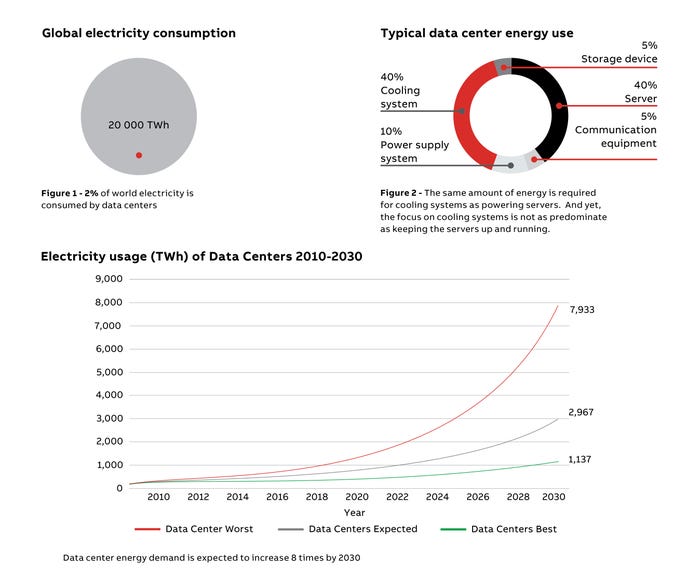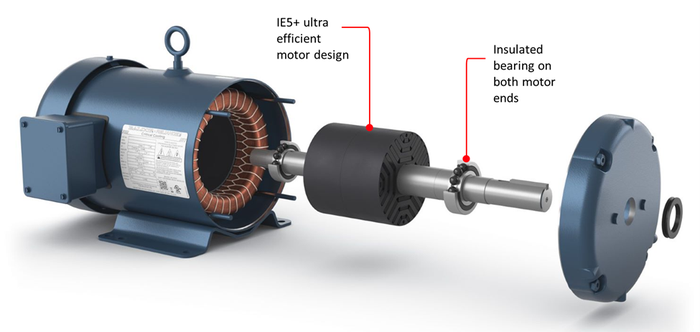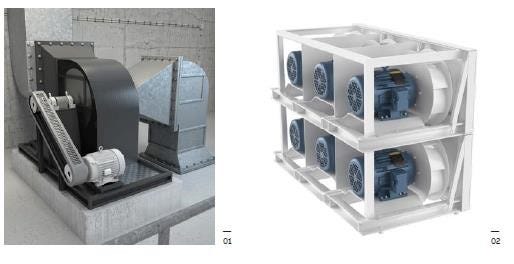
Insight and analysis on the data center space from industry thought leaders.
How the Right Motors Increase Reliability and Reduce Data Center CostsHow the Right Motors Increase Reliability and Reduce Data Center Costs
Electric motors use 45 percent of the world’s electricity. A typical data center averages 500 electric motors in their HVAC systems alone. Optimizing electric motor performance is the easiest way to improve energy efficiency in data centers. Choosing the right motors will not only reduce energy costs, but also reduce maintenance and increase reliability.
July 20, 2022

Sponsored Content
Data centers use two percent of the world’s electricity. Although this number does not seem very large, this demand is expected to grow eight times by the year 2030 – faster than any other industrial sector. Much of that electricity is used to cool the facility and keep the servers running.

Energy consumption chart-01
Data center electricity use.
A typical data center averages 500 electric motors in its HVAC system, which is a large number of motors to maintain as they cool servers and other critical equipment. For data center operators, not only is reliable performance is a must, but so is managing the cost of electricity to run all of those motors. Choosing the right motors will help minimize operating expenses and ensure energy costs are kept to a minimum.
Using only the energy needed
Did you know that most HVAC systems operate at 80 percent load or less, and they do that more than 99 percent of the time? Traditionally, dampers, valves and other mechanical means are used to regulate a motor’s power or speed to operate fans, pumps and compressors in HVAC systems.
To reduce electricity consumption and optimize energy efficiency, operators should ensure variable frequency drives (VFDs) are integrated into the motor operation, as doing so can save 20 to 60 percent in energy costs. VFDs help match energy consumption to actual energy needs, eliminating wasted energy.
Not all motors can be run with a drive, however. Selecting an inverter-duty motor that includes a form of motor bearing protection is also important. An ultra-premium (IE5+) efficient motor reduces energy loss by as much as to 40 percent compared to standard induction motors (NEMA Premium efficiency) that operate directly across the line (DOL).
Mitigating shaft current issues
While using a VFD to control your motor has many benefits, it can also present some challenges. Without proper wiring and grounding techniques, shaft currents induced by VFDs will find the path of least resistance, typically through the motor bearings to the ground. The damage caused by this electrical discharge can lead to catastrophic failures to the motors.
However, there are many ways to mitigate shaft current issues.
Data centers cannot afford any motor downtime; therefore, insulated bearings as well as shaft grounding devices that direct current away from the bearing are becoming a popular practice when specifying motors. Insulated ceramic bearings are non-conductive and prevent shaft currents from flowing through the motor bearings all together. Since no electrical current flows through the motor bearings, there is little chance of current-induced wear.

Picture2_5
Highly efficient components and insulated bearings provide a combination of performance and protection.
Smaller size, better efficiency
A trend in industrial engineering has been toward the utilization of more and smaller motors, optimized for specific tasks. Matching the output of a motor to the maximum power required for a task already represents a major step toward achieving greater energy efficiency. Large, belted fan applications are being replaced by smaller fans in an array to improve system efficiency. Although this improves overall fan efficiency performance, it presents more complexity to the system. Multi-motor plus drive configurations are an ideal setup because of the reduced maintenance cost associated with replacing direct-drive fan applications or motors and drives together.

Picture3_0
Replacing belt-drive setups with direct-drive systems reduces complexity and maintenance costs while increasing efficiency.
Longer lasting means more sustainable
Modern, high efficiency motors, paired with variable speed drives, are designed to be flexible and reliable. Yet above all, they are extremely efficient, offering significant reductions in power consumption compared with older systems. Motors that run reliably for longer do more than reduce electricity consumption and lifetime cost; they are also more sustainable than a motor that needs constant maintenance or needs to be replaced often. Motors designed for reliability help extend the life of the driven-load and data center sustainability.
About the Author
You May Also Like







